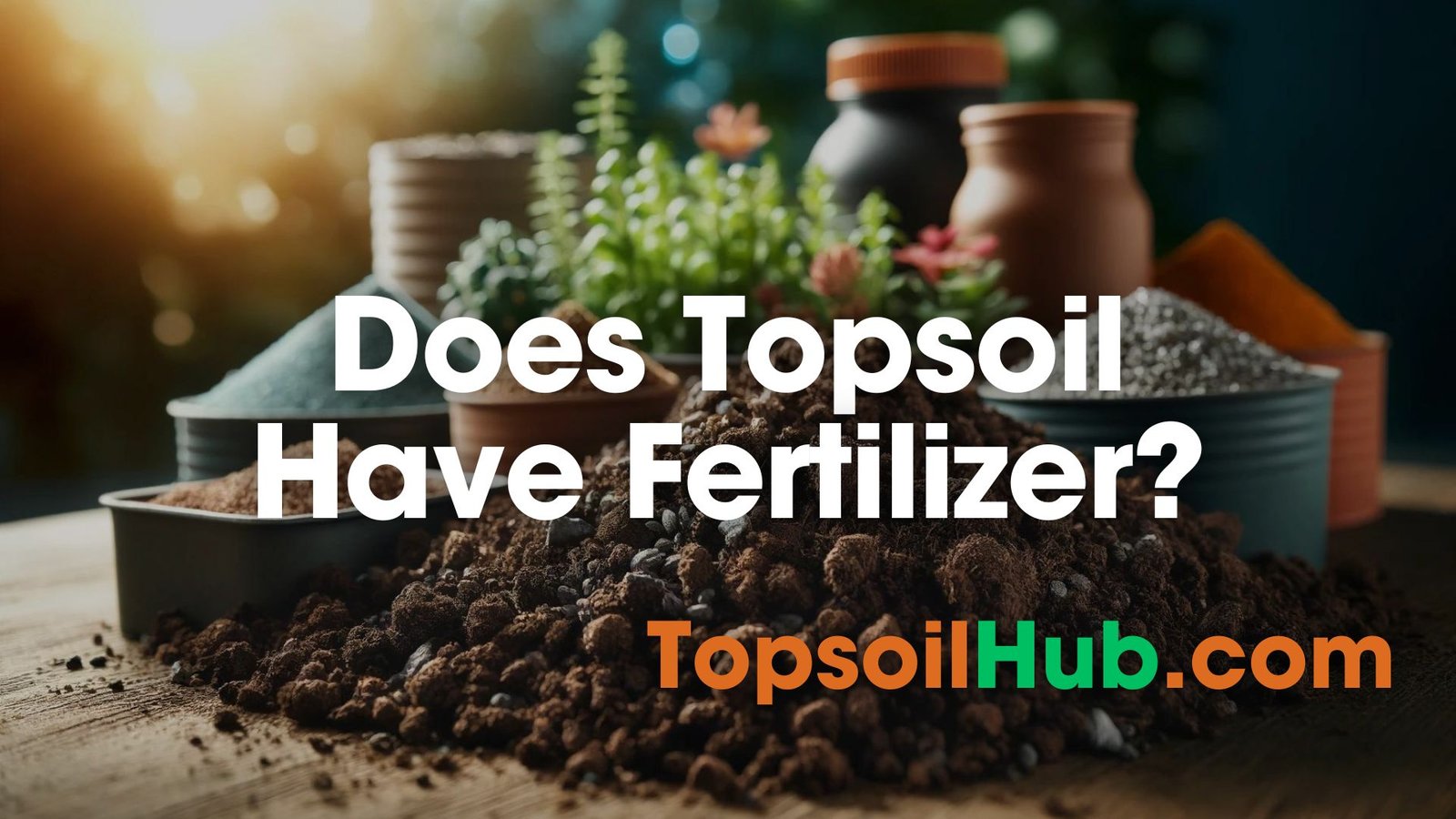Approximately How Many Years Does One Centimeter of Topsoil Take to Form?
Fertile topsoil allows plants and trees to grow, supporting all life on land. But did you know it takes a long time for topsoil to form naturally?
In this blog post, you’ll learn how many years it takes to make just a bit of nutrient-rich topsoil. You’ll also discover the environmental factors, living things, and natural processes involved in creating new topsoil over hundreds or thousands of years.
By the end, you’ll appreciate the amazing work nature does to make topsoil. Let’s get started!
Approximately How Many Years Does One Centimeter of Topsoil Take to Form? Quick Answer
There is no definitive answer to how many years it takes one centimeter of topsoil to form. Your blog post provides a range of estimates from various sources, indicating that it can take anywhere from approximately 1,000 years to 8,000 years for one centimeter of topsoil to form naturally, depending on factors such as climate, topography, parent rock material, and the presence of living organisms. The wide range of estimates reflects the complexity and variability of the topsoil formation process across different environments and conditions.
Factors Influencing Topsoil Formation
Topsoil development is influenced by a variety of environmental, biological, and physical factors. Each type of factor plays a crucial role in the speed and quality of topsoil that is formed.
Factor # 1: Environmental Factors
The environment affects how fast and well topsoil forms. Here are three key aspects:
a. Climate:
The local weather affects how quickly rocks break down, and organic matter rots, which are important for creating fertile soil. Places with warm, moist weather see faster soil formation than areas that are cold and dry. The speed at which soil forms can greatly vary based on whether the area is more like a rainforest or a desert.
b. Vegetation:
Plants drop leaves, branches, and other organic materials that feed the soil. More plants mean more food for the soil, which helps make better topsoil faster. The type of plants in an area can determine what nutrients end up in the soil, affecting its overall quality.
c. Landscape Topography:
How the land lies can affect where water goes and how soil is moved. For example, hills can lead to soil washing away, while flat areas might collect more deposits. Flat areas might have thicker topsoil because less soil gets washed away compared to hilly areas.
Factor # 2: Biological Factors
Living things in the soil help turn dead material into fertile soil. Here’s how they help:
a. Microorganisms:
Tiny creatures like bacteria and fungi break down dead stuff into nutrients that plants can use. This not only feeds the soil but also helps stick soil particles together. These organisms are essential for a healthy soil environment, turning waste into useful materials.
b. Other Living Organisms:
Larger creatures like worms and bugs mix the soil and make spaces for air and water, which are good for plant roots. Their digging and moving through the soil help to blend everything well. This activity helps prevent the soil from getting too compact, which can harm plant growth.
Factor # 3: Physical and Chemical Processes
Non-living processes also play a big role in forming topsoil:
a. Weathering:
Rocks break down into smaller pieces through natural actions like changes in temperature or water dissolving them. This provides the basic materials for soil. The smaller rock particles blend with organic material to form soil over many years.
b. Erosion and Deposition:
Soil gets moved around by water or wind, which can either wash soil away or build it up in new places. When soil settles somewhere else, it can start to form new layers of topsoil. While erosion can remove topsoil, deposition can help create new fertile areas, especially in valleys and flat lands.
Understanding how these factors work together helps us know how topsoil forms and what we can do to keep it healthy. Managing these factors properly ensures that the soil stays productive for future generations.
How is Soil Made?
Creating soil is a gradual process that turns rock and organic waste into fertile ground. This process involves several important steps that each contribute to making what we know as soil.
Step 1: Breaking Down Rocks
The first step in making soil is called weathering. This is when natural forces break rocks into smaller pieces. This happens when water gets into cracks in the rocks, freezes, and then expands, breaking the rock apart.
Over time, these tiny rock pieces pile up and start to form the base of new soil. The smaller these pieces become, the easier it is for them to combine with other elements to create soil.
Step 2: Adding Organic Material
The next step involves organic materials, like dead plants and animals, being added to the rock pieces. As these materials break down, they enrich the soil, making it better for new plants to grow. This process is known as deposition.
It’s vital because it adds nutrients that are essential for plant life. Each layer of decayed material builds up over time, making the soil richer and more capable of supporting diverse plant life.
Step 3: Moving Soil Around
Although we often think of erosion as a problem because it can wash away soil, it also plays a positive role in forming soil. Erosion moves soil from one place to another.
This can help create new, fertile areas when soil particles settle and stack up in a new location. This natural movement of soil helps spread nutrients around and can form new topsoil in lower areas, like valleys.
Step 4: Forming Soil Layers
After the rock particles and organic matter mix, they begin to bind together to form what we call topsoil. This layer is crucial because it’s where most plants grow. It has lots of nutrients and microorganisms that plants need to thrive.
As these particles stick together, they help the soil hold onto water and nutrients, which are vital for healthy plant growth. This binding also helps the soil stay aerated, which is good for plant roots.
This step-by-step transformation from rock to a rich, fertile material is what creates the soil that covers much of Earth’s land. Each part of the process is essential for developing the fertile topsoil that supports our forests, gardens, and crops.
By understanding these steps, we can better appreciate the importance of protecting this valuable resource.
Challenges in Soil Conservation
1. Erosion
One of the biggest challenges is preventing soil erosion. Erosion happens when the top layers of fertile soil are washed or blown away by wind and rain.
This removal of nutrient-rich topsoil makes it very difficult for plants to grow properly. Erosion can happen quickly, especially on sloped lands or areas with little vegetation cover.
2. Weathering
Another major challenge is dealing with the effects of weathering on soil. Weathering refers to the gradual breaking down of rocks and soil over time due to sun exposure, rain, freezing and thawing temperatures.
Excessive weathering can damage and deplete fertile topsoil layers. Areas with extreme weather conditions are more prone to rapid weathering.
4 Ways to Protect Topsoil From These Challenges
To protect soil and minimize topsoil loss, effective conservation practices are needed:
1. Ground Cover
Maintaining vegetation ground cover helps anchor the soil and prevents it from being easily eroded by wind and water runoff. Ground cover like grasses, shrubs, or crop residues shield the soil.
2. Contour Plowing
Plowing and tilling across slopes instead of up and downhill can significantly reduce soil erosion from runoff water. This prevents channels for water from running straight down slopes.
3. No-Till Farming
The practice of no-till farming, where crops are planted directly into untilled soil, helps stop erosion and limits weathering damage by minimizing soil disturbance. The soil remains covered and undisturbed.
Implementing sustainable farming and land management approaches is crucial for preserving fertile topsoil layers and ensuring long-term soil productivity.
Practices like crop rotation, using compost, and reducing chemicals can enhance soil health. Rotating different crops adds nutrients back into the soil.
By understanding these key challenges and utilizing effective conservation strategies, we can better protect our limited topsoil resources for current and future agricultural needs.
Conclusion:
In conclusion, making just one centimeter of good topsoil takes a very long time – anywhere from a few hundred to several thousand years. Many different things need to happen over this long period for topsoil to form. The weather, plants and animals, and natural processes like wind and rain all play important roles.
Since it takes so much time and work from nature to create topsoil, we need to take good care of the topsoil we have. Using farming methods that protect the soil, like leaving plants on the ground to cover the soil and not digging up the soil unnecessarily, can really help. Looking after our topsoil now means we can keep using it to grow crops and plants for a very long time into the future.
Let’s all do our part to be good caretakers of this precious resource! Simple actions like composting, planting trees, and supporting sustainable agriculture go a long way in preserving fertile topsoil for generations to come.







